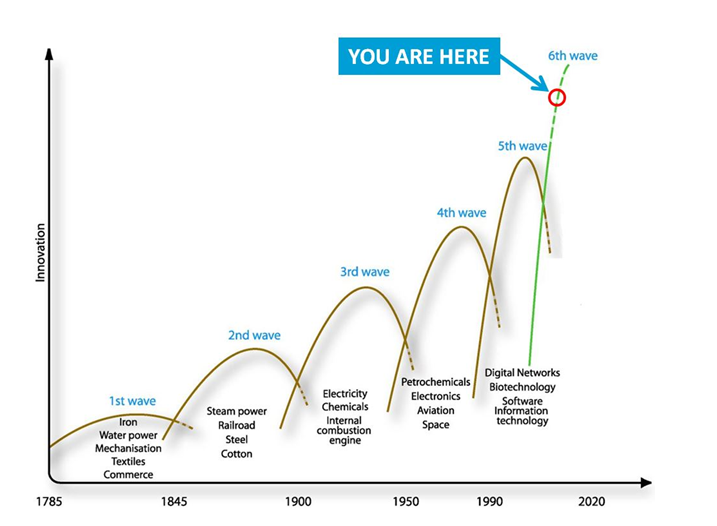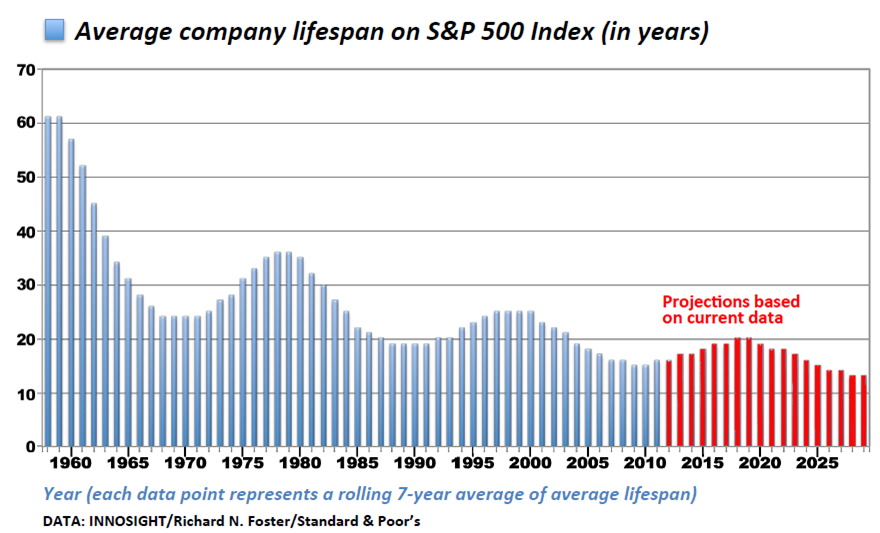Over the years, we have learned that the intellect and knowledge we hold on customer likes, dislikes and behaviour is the new form of value creation. This is because we are able to transform this information into innovation.
Innovation is the process of utilising information to create meaningful value (in the form of products) to someone’s life. We consider a product is innovative when it is completely new and different in a market. Mainly, these innovations add specific advantages than the previous solutions.
In this article, I will take you through the all aspects of innovation and how it affects your business.
Page Contents:
Total Time: 6 minutes
What is Innovation?
Why Is Innovation Important?
Waves Of Innovation
Opportunities of Innovation
1. What is Innovation?
Innovation is discovering and thinking of new ways to solve problems that lead to the creation of new products. Innovation can come in forms of:
- Business process innovation
- Positioning innovation (market innovation)
- Research and development innovation
Moreover, the business process innovation is finding new and cheaper ways of delivering raw materials into the finished product.
Positioning innovation will include offering specific value that in right for the customer. Furthermore, innovation is also seeking new ways to enter a market and position your company in a more competitive and sustainable situation.
Research and development innovation will include technological advancements to improve quality, reliability and value within the materials and systems themselves. This can include things like car chassis or computer software.
In addition, there are two types of innovation; the first being useless innovation and the second being effective innovation. A company is successful with effective innovation for one simple reason – they collect information on the market they’re in. Accordingly, innovation is categorised as product innovation, process innovation (supply chain innovation), or marketing innovation.
2. Why Is Innovation Important?
Businesses are becoming more in demand for innovation because as the social environment is constantly changing so is the demand and price.
Innovation creates wealth and leads directly to increased profits and sustainability for the long term because it is imperative to maintain and improve quality of life. Furthermore, a business will inevitably fail because of the disruption of the competition. This is because over time someone will be able to deliver the product better to the changing customer demands, and so it is important to change with the demand.
2.1 How Innovation Affect the Long Term

This image represents what has happened to businesses when responding to the market share over time.
As you can see, there are three general approaches how businesses operate. The first is mediocre and slow – this represents firms such as Blockbuster and HVM as they were kings of their business of their time but there business model shifted very slow of their lifetime. As a result, they eventually went into administration whereby Netflix and ITunes created substitute products, taking advantage of the internet.
The second is the creative and agile describe firms such as GE and IDIO. These are amongst the Fortune 500 12%, and they employ entrepreneur’s into the business to be creative and satisfy the changing demands of the market.
Finally, innovative and fast describe firms such as google and Tesla, which is creating completely new value useful offerings that have not been seen before.
Walter B. Wriston, the former chairperson of Citicorp who became the most influential banker of his generation says “The new source of wealth is not material; it is information, knowledge applied to work to create value. The pursuit of wealth is now largely the pursuit of information, and the application of intellectual capital to the means of production.”
Information capital is more important than physical and monetary capital, which explains why the information capital is more important for wealth creation.
3. The Waves of Innovation
Firms need to seek innovations that make them more competitive. Joseph Schumpeter, in his book creative destruction, discovered that we have experienced five waves of technological breakthroughs since the industrial revolution. Moreover, these technological breakthroughs are only possible because of innovation, and have been somewhat responsible for wealth creation and destruction of societies, businesses and economies.
3.1 Waves of Innovation Model

Image illustrates – innovation comes in waves, which led Joseph Schumpeter theory that capitalism is fundamentally an evolutionary process of “continuous innovation and creative destruction.”
The concept of the five previous innovation waves is that all firms must change to the new wave or they will fail. As you can see by the above image, each wave follows a similar pattern of the product life cycle, the later wave lasts less time but have a bigger boom of innovation. Moreover, each wave builds on groundwork created in the previous wave, so new waves are larger and come faster.
3.2 Sixth Wave of Innovation
We are currently travelling towards the sixth wave of innovation, whereby it is predicted that this may break and create an entirely new tempo and magnitude of innovation waves. According to this concept, to outperform your competitors your customers will choose the more environmentally friendly products over the less environmentally friendly rivals. This includes understanding the effects of your products and the impacts of technology you use.
Because of being in a more connected world through the internet, heading into the sixth wave is somewhat different than the previous five. This means opportunities are almost endless as you have get access to other countries and other economies at an instant.
Not only that, it is said by economists that the lack of aggregate supply factors is cause for concern for entering recessions. Such as, shortages in energy and water, pollution, lack of natural resources, poverty and nuclear risk.
Social responsibility and innovation towards a greener future will have greater impact on the political, social and economic factors in the future.
3.3 Innovation Drives The Economy
Each wave of innovation comes with a boom on innovation and then results in a recession, towards the end of each wave. However, a boom of innovation, as you can see the next wave, lifted us out of the recessions once again.
This demonstrates that there is something to learn about the effects of innovation with the economy. In addition, the expected need for entrepreneurs, those come along and create innovations.
4. Opportunities of Innovation
Buckminster Fuller once observed that before the year 1900 it took between 100 to 200 years for the total amount of human knowledge to double. However, by the end of World War II in 1945, the rate of knowledge creation had accelerated significantly and human knowledge doubled every 25 years.
Some predict the rate of knowledge growth to continue to accelerate, reaching an incomprehensible rate of doubling of every 72 days by the year 2020. At that rate, the amount of human knowledge would increase over 1,000 times in just two years (720 days).
All in all this means that within the next 10 years we will see more world-changing innovations than we have seen before.
4.1 Average Company Life Span Over Time

As you can see from the above image, the average life span of firms is decreasing with the accelerated rate of innovation growth. This is happening because new businesses that are smaller are more agile to adapt to the changing environment.
Small enterprises have consumed corporations through the advancements in technology. Each organisation has different development paths caused by the competitive environment and the ability to respond through creative ways of solving problems naturally creates new markets consuming the old markets.
This means there chances for a smaller business to succeed are greater and the startup costs have been almost removed because of the digital advancements, and the internet.
Innovation has created an environment of opportunities – Everyone is connected globally and the barriers that used to keep business apart are fading which is also increasing the possible market size.
There is more information to work with, websites such as Google has a database profiling millions of users that use the service. The affiance of new products can be created more cheaply and faster than ever before, resulting in a company life span becoming lower.




![#3 Step Start-Up [Methodology] For Growth #3 Step Start-Up [Methodology] For Growth](https://allbusinesstoolkit.com/wp-content/uploads/2019/02/start-up-process.jpg)
